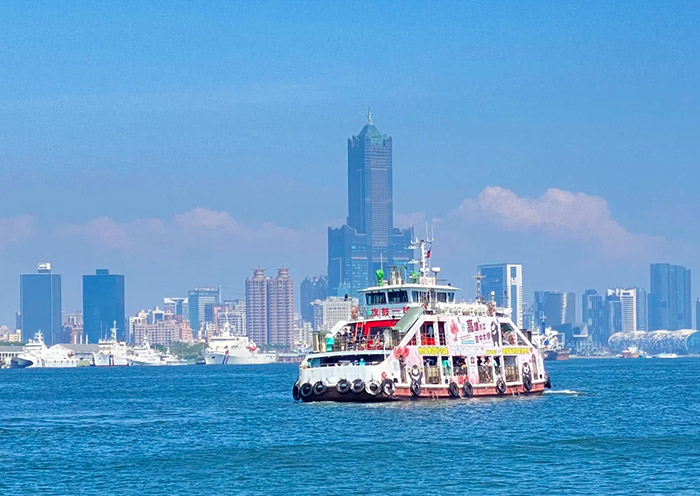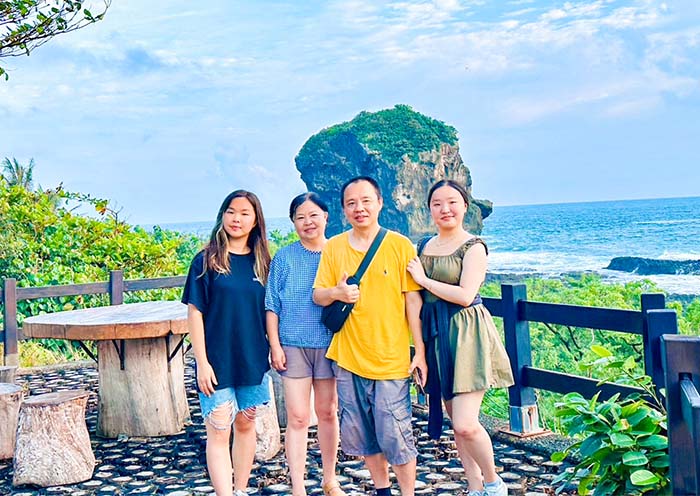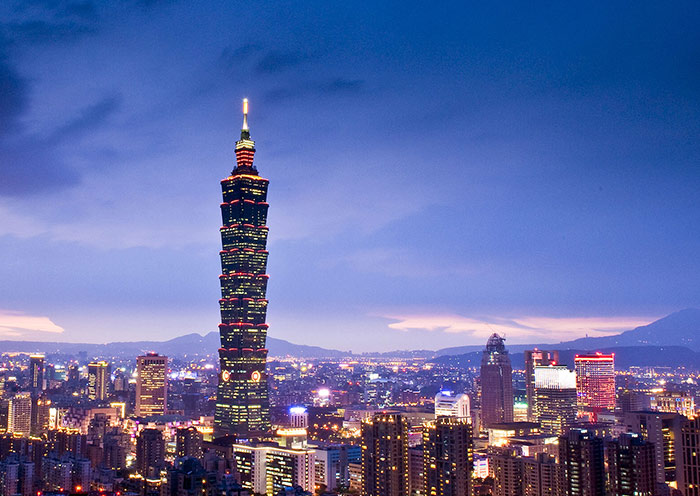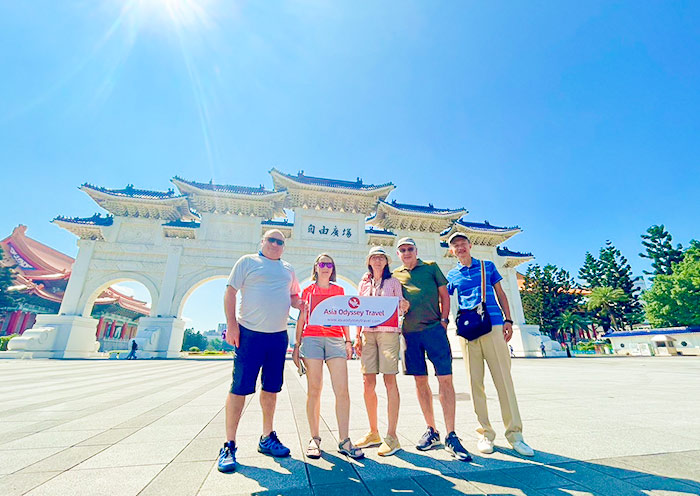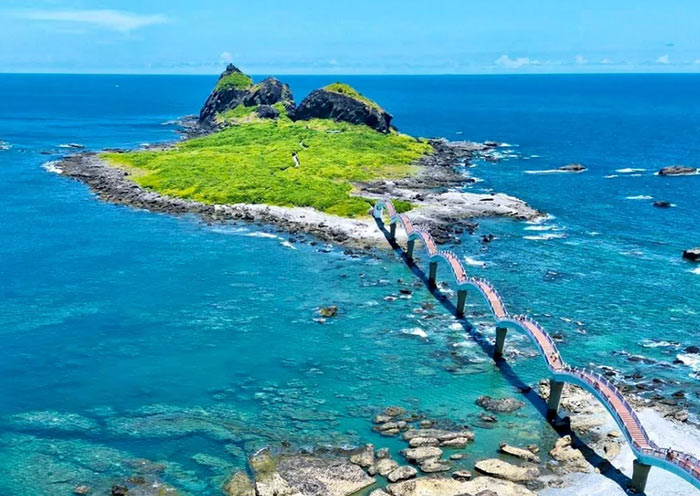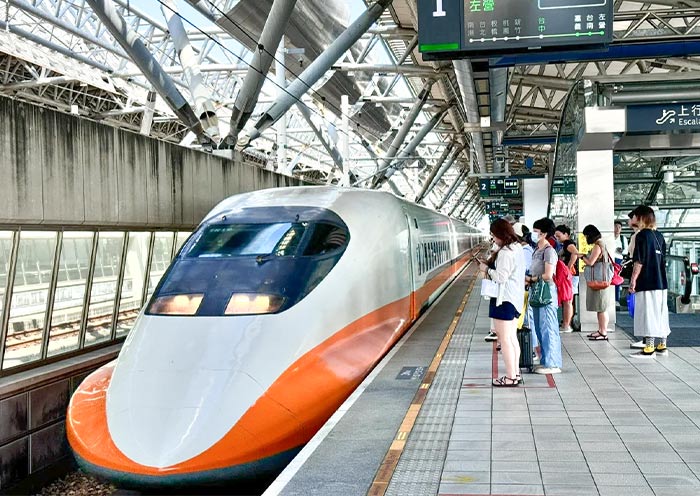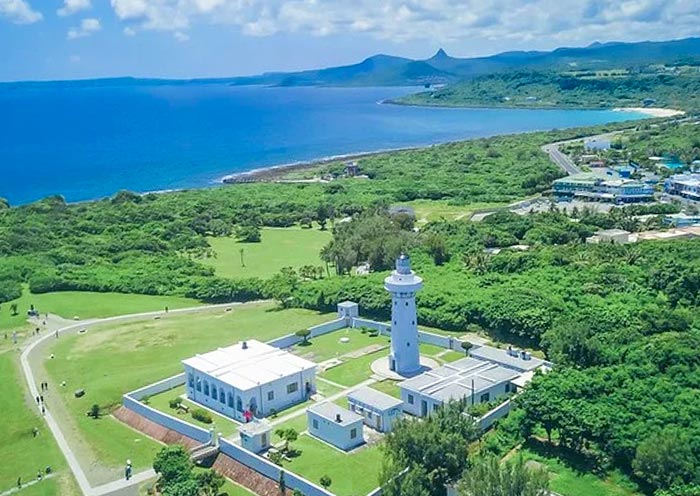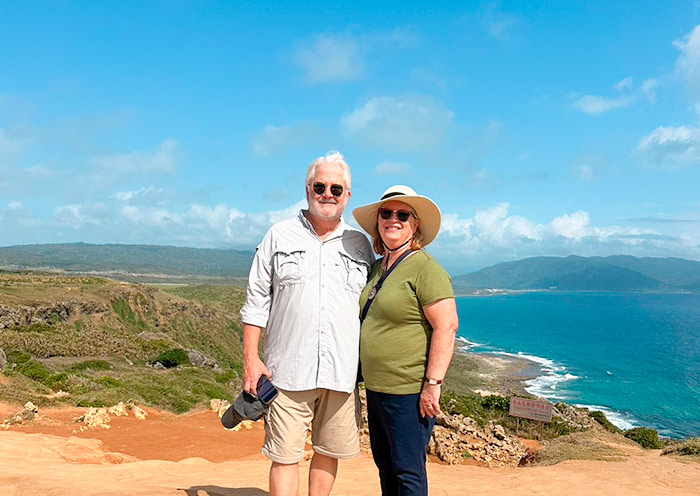11 Days Taiwan Island Tour - From South Taiwan to North Taiwan
- Highlights
- Itinerary
- Price
- Trip Notes
- Accommodation
- Photos
- Reviews
Taiwan Odyssey: Unveil Southern Taiwan & Northern Taiwan in One Trip
Unlock Taiwan’s Treasures with our 11 Days Taiwan Island Tour from Kaohsiung to Taipei. From Taiwan’s vibrant south to its bustling north - via high-speed train, blending coastal beauty, mountain magic, cultural richness & mouthwatering Taiwan food.
Start in Kaohsiung (Southern Taiwan) with free exploration, then head to Kenting for coastal wonders like ancient temples and pristine beaches. Explore Hengchun’s historic walls, Baishawan’s turquoise waves, amazing ocean views from dramatic Eluanbi Lighthouse, and lush Longpan Park.
Trace north for Tainan’s Food & Nantou’s Sun Moon Lake. Discover Tainan’s colonial history at Anping Fort and Anping Tree House, while trying famous Tainan food at Anping Old Street. Head west to Alishan: breathe in high-mountain tea, ride misty forest trains. You can glide across Sun Moon Lake’s calm waters by yacht.
Kaohsiung captivates with cultural gems! Witness stunning sunsets at Cijin Island, and find serenity at Fo Guang Shan Buddha Museum. Don't miss the iconic Dragon and Tiger Pagodas at Lotus Lake for good fortune!
Zip north to Taipei (Northern Taiwan): wander Yehliu’s rock formations, savor Jiufen’s lanterns, soak in Beitou’s hot springs, delve into treasures at the National Palace Museum, and crown your trip at Taipei 101.
Book our 11 Days Taiwan Tour now. This south - to - north journey unveils Taiwan's hidden gems. As your local travel agent, we've curated the ultimate Treasure Island experience.
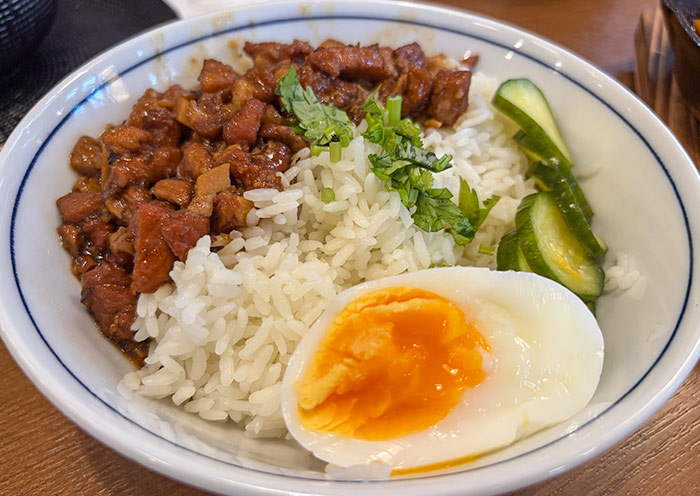
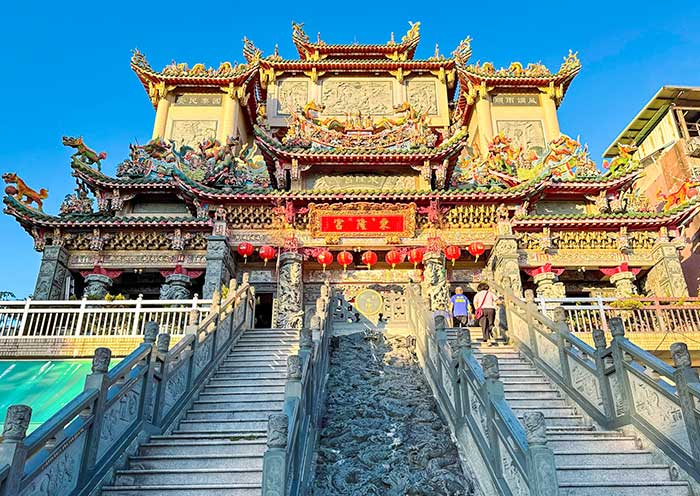
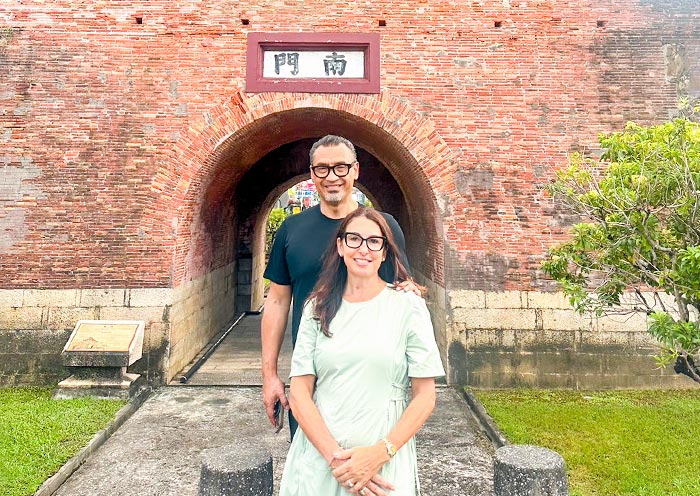
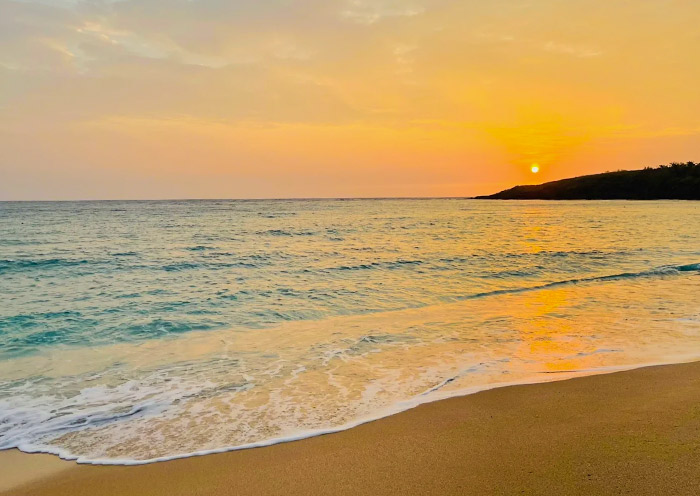
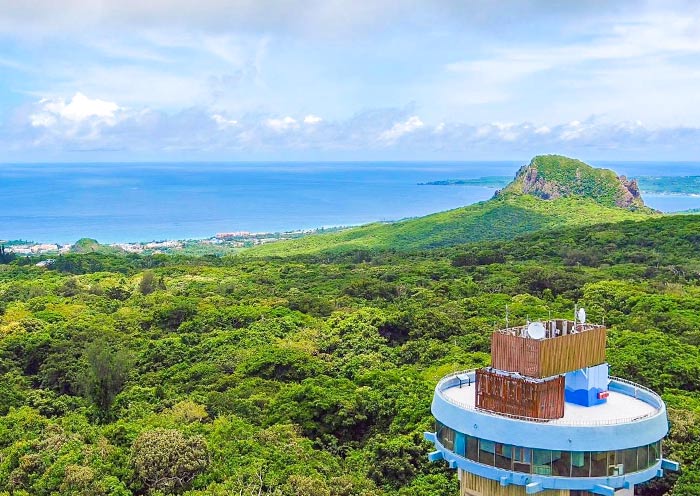
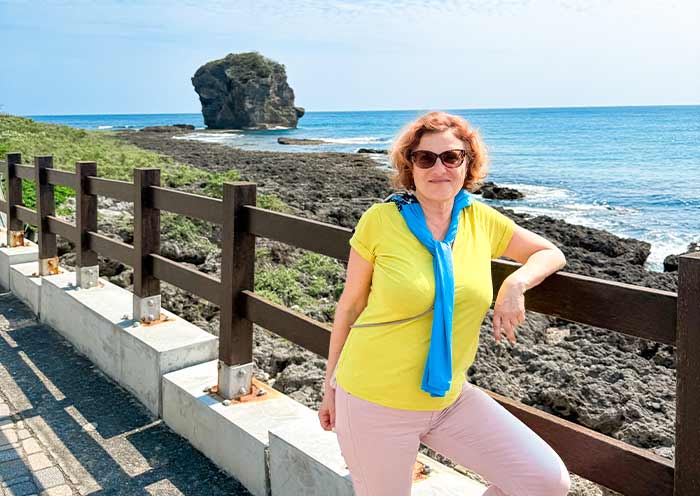
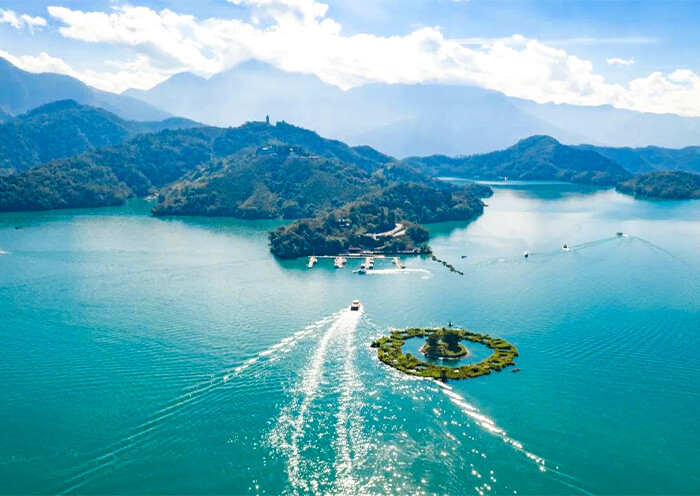
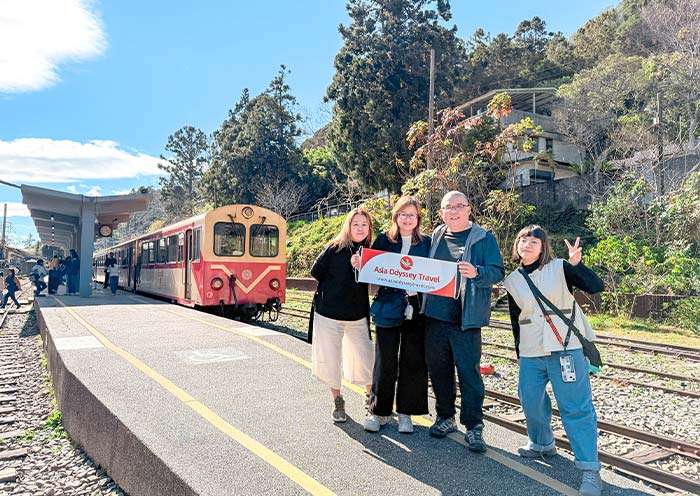
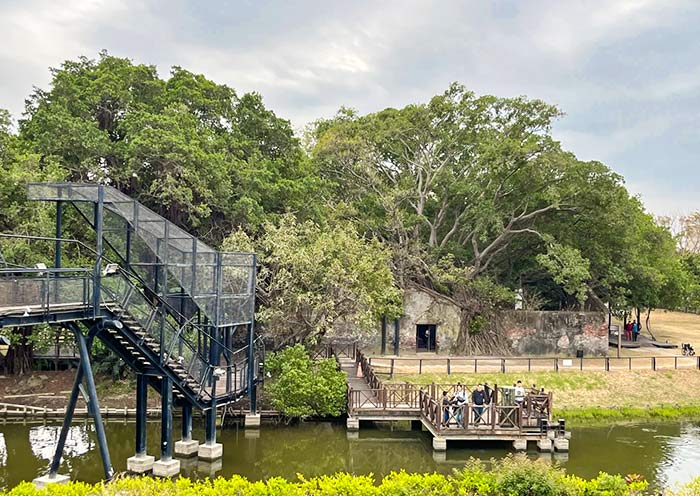
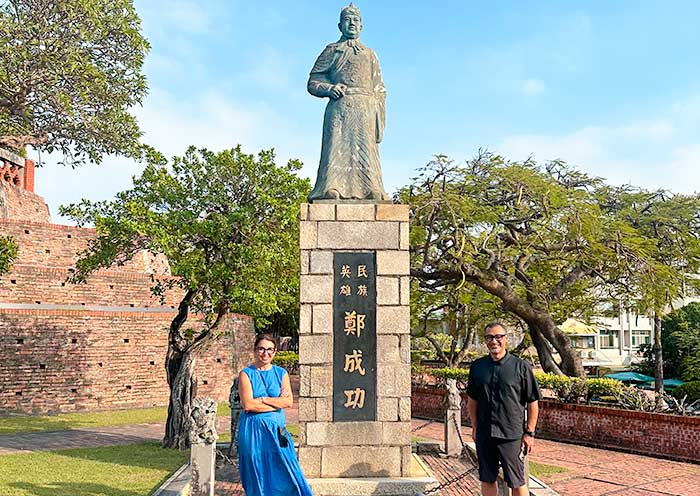
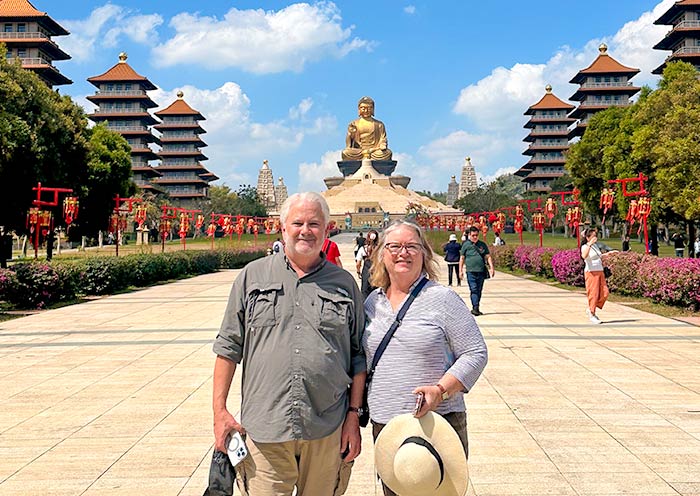
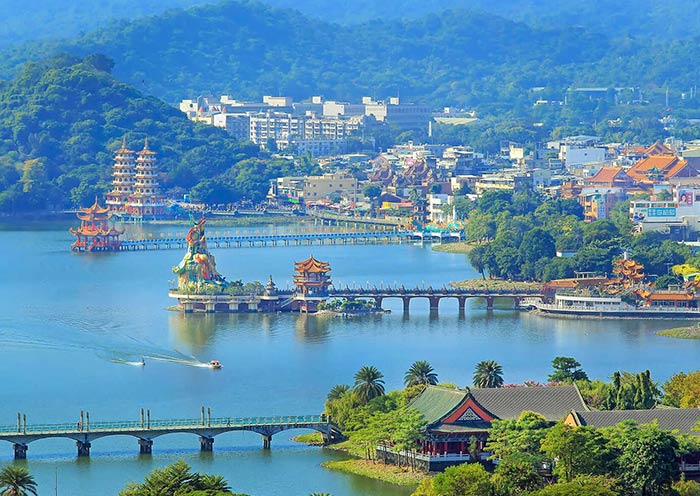
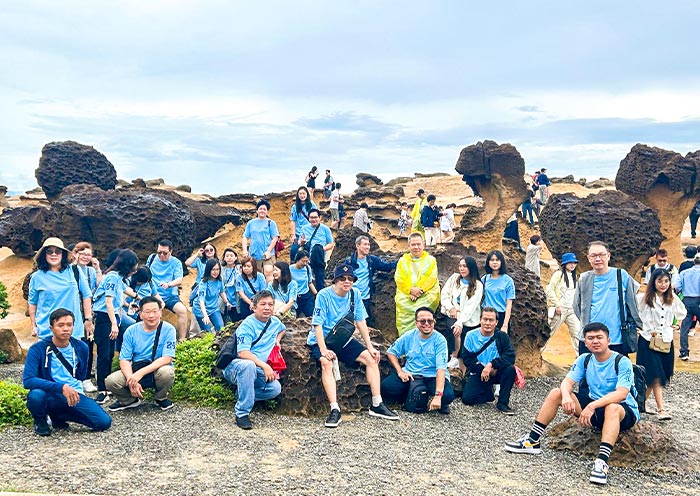
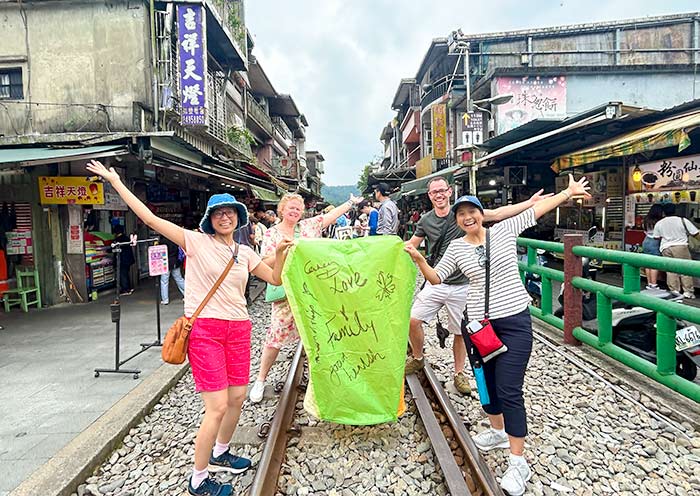
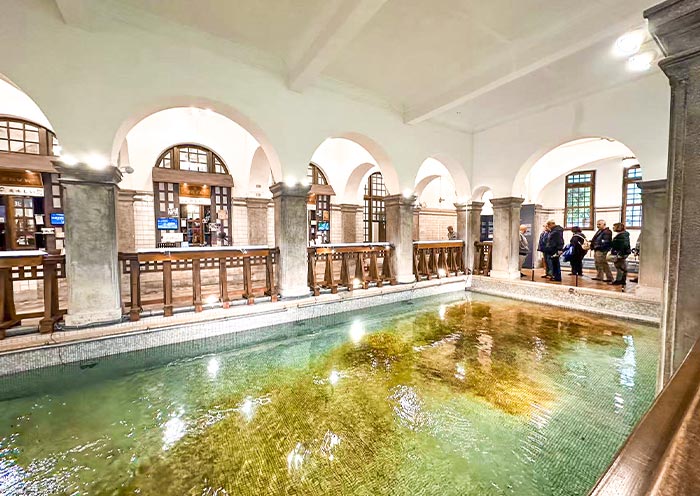
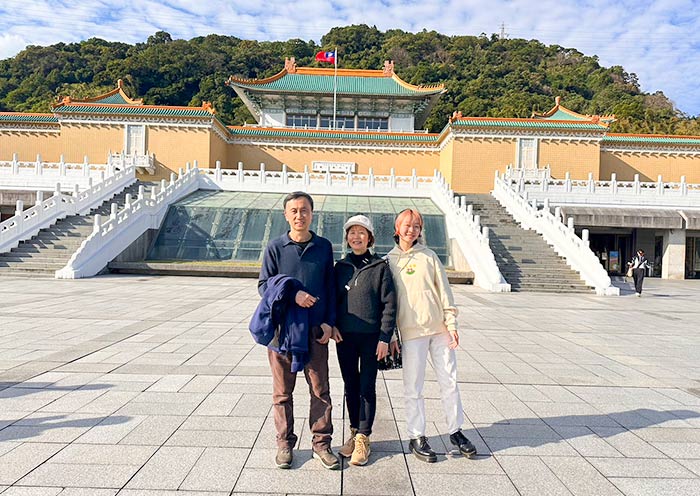
Itinerary at a Glance
Kaohsiung, Taiwan (2.5 Day)
Maritime Building Café (Exterior View), Donggang Donglong Temple, Donggang Huaqiao Seafood Market, Fo Guang Shan Buddha Museum (Closed on Tuesdays), Lotus Lake (Dragon and Tiger Pagodas); Cijin Ferry, Cijin Old Street, Cijin Mazu Temple, Cijin Beach Free Time Explore (Pier-2 Art Center)
Kenting, Taiwan (2 Days)
Hengchun Old Town (City Walls), Kenting Baishawan Beach, Kenting National Forest Recreation Area, Sail Rock, Eluanbi Lighthouse (Closed on Mondays), Southernmost Point of Taiwan, Longpan Park Grassland
Tainan, Taiwan (0.5 Day)
Anping Tree House, Anping Fort, Anping Old Street
Chiayi, Taiwan (1 Day)
Hinoki Village; Alishan Mountain Tour: Alishan Route A: Zhaoping Station, Sisters Ponds, Three Brothers & Four Sisters, Golden Pig Auspice, Forever Love, Magnolia Garden, Shouzhen Temple; Alishan Route B: Shouzhen Temple, Three Generations of Wood, Alishan Museum, Xianglin Elementary School, Ciyun Temple, Alishan Sacred Tree Remains;
Nantou, Taiwan (1 Day)
Sun Moon Lake Tour: Shuishe Pier → Xuanguang Temple Pier → Ita Thao Pier → Shuishe Pier
Taipei, Taiwan (4 Days)
Yehliu Geopark, Jiufen Old Street, Shifen Waterfall, Shifen Old Street, Beitou Hot Spring Museum (Closed on Mondays), Thermal Valley (Closed on Mondays), Tamsui Culture Tour, National Palace Museum (Closed on Mondays), Dadaocheng, Dihua Street, Chiang Kai-shek Memorial Hall, Taipei 101 (Exterior View)
Itinerary Day by Day
Welcome to Kaohsiung, the largest port city in Taiwan. Kaohsiung, Taiwan’s Second-largest City, is famous for its port memories, creative arts, stunning coastal scenery, seafood & vibrant modern attractions. Your driver will pick you up and transfer you to your hotel. Enjoy your free time by exploring time Pier-2 Art Center, and Cijin Island from Cijin Old Street to Cijin Mazu Temple & Cijin Beach. You won't miss the chance to try Taiwan Food at its night markets.
Free Time Ideas:
1. Cijin Old Street of Cijin Island: As a must-visit tourist spot in Kaohsiung, Cijin Old Street, adjacent to the Cijin Ferry Terminal, is renowned for its fresh seafood and traditional snacks. You can visit Cijin Mazu Temple (Kaohsiung's first Mazu temple; Since 1673) for Mazu culture and Minnan architecture, or stroll on Cijin Beach for its black sands and sea view, or Hike to Kaohsiung Lighthouse (Cijin Cihou Lighthouse) for Sunset !
2. Pier-2 Art Center: A must-visit "urban memory container" in Kaohsiung. Located at the junction where Love River meets Kaohsiung Harbor, adjacent to the city landmark Great Harbor Bridge, its predecessor was the Kaohsiung Harbor warehouses built in 1973, which once stored fish meal and sugar. With industrial transformation, the old warehouses fell silent and idle until 2000, when, by chance of a fireworks display, they were transformed into a paradise for artists.
3.Love River Night Boat (The Love Boat; Self-pay): Enjoy a romantic boat trip on the Love River, the mother river of Kaohsiung, for the landmarks of Kaohsiung, such as Kaohsiung Music Center (junction between Love River & Kaohsiung Port) & Great Harbor Bridge (longest cross-port rotating bridge in Asia; next to the Pier-2 Art Center).
4.Taiwan Food Tour in Kaohsiung Night Markets: Explore Ruifeng Night Market (瑞丰夜市; More Local; Closed on Mondays & Wednesday) or Liuhe Night Market (六合夜市; Opened Daily) for local food. Double-check with locals for the opening date & time.

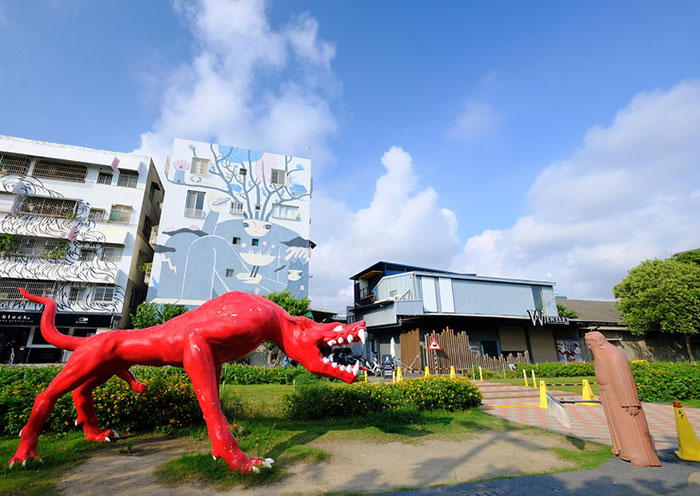
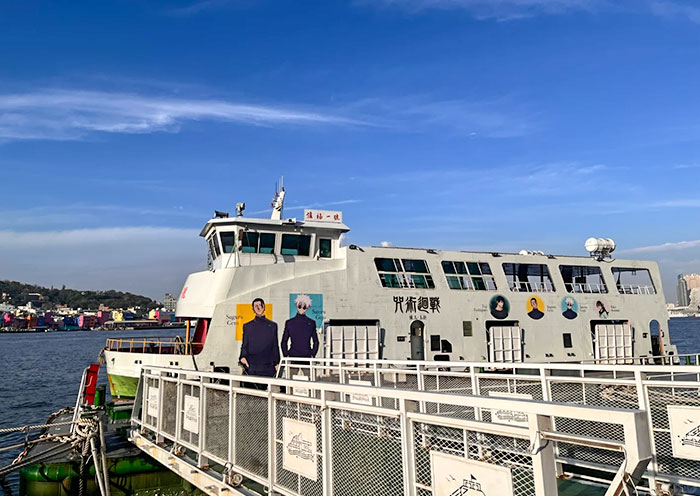
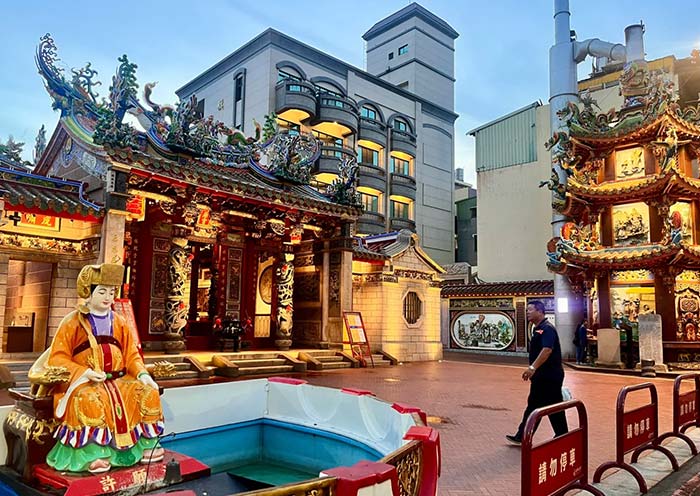
This morning, head to explore Donggang Donglong Temple (40 km; 1hour) by a quick photo stop at Maritime Building Café. At lunch time, visit Huaqiao Fish Market for seafood. In the afternoon head to Kenting and explore Hengchun Ancient City, Kenting Baishawan Beach. Overnight in Kenting.
First, you will have a quick stop at Dapeng Bay for a photo of the famous Maritime Building Café (Exterior View). It is the first "church cafe" in Taiwan, located on the sea, making it extremely unique. Its bright, goose-yellow color scheme inevitably brings to mind the architecture of churches in Spain. To reach this church cafe, one must first walk across a 304.5-meter-long seawall. Since its opening, it has become a popular photo spot on Instagram.
Then, explore Donggang Donglong Temple, which is dedicated to the deity Marquis Wen. Originally, Marquis Wen was a scholar of the Tang Dynasty who met with misfortune while traveling on imperial orders. After becoming a god, he frequently patrolled the coastal areas of Fujian and Zhejiang, protecting ships that traveled there. In 1706, a large number of sacred logs washed ashore at Donggang Beach overnight, inscribed with the words "Donggang Wen Family." Following this divine sign, devotees built a temple to honor Marquis Wen. Its most distinctive feature is a paifang (decorative archway) adorned with layers of bright gold leaf, which has a history of over 300 years.
PS: The Donglong Temple holds a welcoming ceremony for Marquis Wen (peace festival; 迎王/平安祭典) every three years, lasting eight days and seven nights. The highlight of the entire festival is the burning of the Marquis' ship on the last day. The main purpose of the "Welcoming Marquis Wen/Peace Festival" is to invoke the divine power of the great deity and other gods to dispel local evils, plagues, and diseases. Locals place greater importance on the ceremony than on the New Year, as everyone returns home to participate in the event, contributing money or effort to ensure a successful celebration. Try your luck to witness the festival.
At lunchtime, it is great to pay a visit to Donggang Huaqiao Seafood Market, which is located near the Donggang Fishery Port, one of Taiwan's major fishing ports. The Huaqiao Fish Market, the budget seafood paradise, is the most representative seafood market in the area. The market houses nearly 400 vendors offering a wide variety of freshly caught seafood, including the "Three Treasures of Donggang," such as black skipjack tuna, sakura shrimp, and saury roe, all delivered straight from the fishing port docks. Here, you can select your favorite seafood and choose to have it cooked on-site by the market's restaurants (additional processing fee required), or enjoy ready-to-eat seafood dishes, as well as other local snacks.
After lunch, time to head to Kenting (70 km, 1.5h) and visit Hengchun Old Town.This town was completed in 1879 and is the southernmost county town in Taiwan. Due to its pleasant climate and year-round spring-like weather, it was named "Hengchun"(恒春; In Chinese, it means Eternal Spring). It is not only the only remaining ancient town in Taiwan with all its city gates preserved, but also the filming location for the movie Cape No. 7 (《海角七号》). Surrounded by mountains, the town is flanked by Santai Mountain ( Tortoise/玄武) to the north, Longluan Mountain (Blue Dragon/青龙) to the east, Huxi Mountain (White Tiger/白虎) to the west, and Xiping Mountain (Rosefinch/朱雀) to the south, aligning with traditional feng shui principles.
The Hengchun Ancient Town preserves its four gates: east, west, south, and north. You can start the tour from the west gate, walking to Tianhou Temple and Monkey Cave Mountain, then to the well-preserved south gate, and finally to the east gate (where remnants of the battery, gunholes, and city wall paths can be found) to enjoy panoramic views of Hengchun Old Town. Additionally, you can savor local delicacies such as winter melon duck, Mung Bean Delicacy (绿豆馔), and mochi.
At last, reach Kenting’s Baushanwan Beach. Baishawan Beach (White Sand Beach) is a shell beach composed of marine organisms' shells, named for its fine, white sand. This beach stretches 500 meters long and 40 meters wide, making it not only the most beautiful beach in Kenting but also a famous filming location for renowned director Ang Lee's movie Life of Pi (the scene where the thin tiger departs was filmed here), making it a must-visit spot for tourists in Kenting.
Here, you can participate in a variety of water activities such as swimming, diving, sailing, and jet skiing (at your own expense). On land, you can enjoy barbecuing and camping or biking and hiking along the bicycle paths (Self-pay). Especially during sunset, when the evening glow spreads across the sea, lying on the beach and leisurely enjoying the ocean view is truly a great pleasure in life.
Overnight in Kenting. "Kenting", in Chinese means "the robust young men for cultivation," as it was named due to the Qing Dynasty's recruitment of citizens to develop the area.
Free Time Ideas:
Kenting Night Market: There is a wide variety of snacks available, such as grilled squid, banana pancakes, roasted wild boar meat, QQ egg milk, fried Oreos, cocktails, ice cream, pizza, and more.
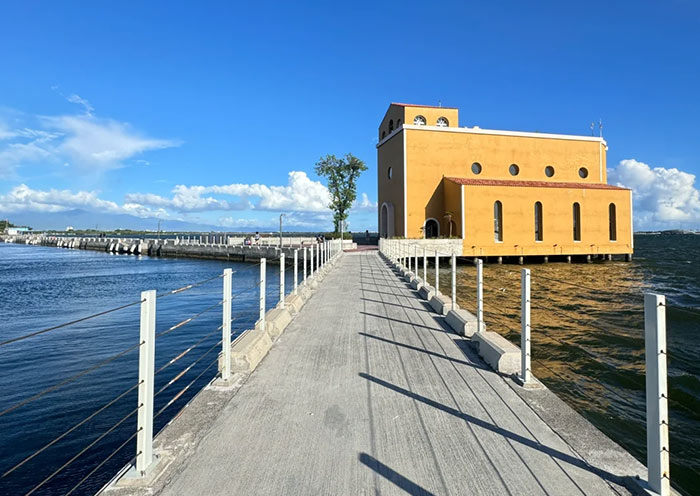
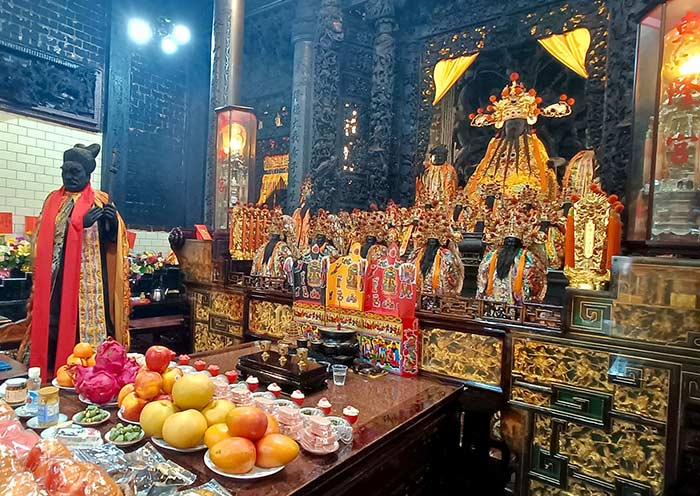


This morning, head to explore Kenting National Forest Recreation Area. At lunch time, vis Sail Rock (Fanchuangshi), Eluanbi Lighthouse, Longpan Park Grassland. Overnight in Kenting.
Taiwan's forest coverage rate reaches 61%, and Kenting National Forest Recreation Area is an excellent place to learn about the local forest ecology. This park features natural sea erosion cave trails with unique geological evolution: it was originally an ocean garden populated by stony corals, calcareous algae, foraminifera, and shells. Due to tectonic plate movements 500,000 years ago, it formed a distinctive forest ecosystem - a high coral reef forest - combining rich ecology, monsoon rainforest characteristics, and limestone topography.
Kenting National Forest Recreation Area was Taiwan's first tropical botanical garden and has a history of over a century. The park is divided into two visitor areas and 17 sightseeing points, showcasing over 1,200 species of tropical plants. The park offers two themed routes: "Botanical Stroll" (1.5-2 hours) and "Geological Adventure" (2.5-3 hours), allowing you to choose based on your physical ability and interests.
Along the way, you may see underground caves, stalactites, coral reef formations, and rare plants with exposed roots, as well as have the chance to encounter wildlife such as Formosan sika deer and Taiwanese macaques. This area is also a favorite bird-watching spot for locals. Climbing the Observation Tower provides a view of the magnificent forest canopy, Frog Rock, and the stunning Pacific Ocean, allowing you to appreciate the beauty of nature fully.
In the afternoon, transfer to Eluanbi Lighthouse via a photo stop at Sail Rock. The Sail Rock, standing at about 18 meters high, is an early coral reef rock that rolled down from above to the seashore. When viewed from a distance, the Sail Rock resembles a sailboat entering the harbor with its sail raised. The surface of the rock is covered with lush wildflowers, creating a picturesque contrast with the deep blue sea. Moreover, the Sail Rock is famous for its side profile, which bears a striking resemblance to a human face in profile. Locals playfully refer to it as the "Nixon Head," adding to its renown and uniqueness.
Then, head to Eluanbi Park for Eluanbi Lighthouse & Southernmost Point of Taiwan. The Eluanbi Lighthouse, built in 1881, is Taiwan's southernmost lighthouse and a must-visit attraction in Kenting. Facing southwest with mountains at its back and overlooking the sea, the lighthouse is constructed in the form of a fortress, with gun ports in the walls and surrounded by a moat, making it the only armed lighthouse in the country.
Located on the left side of the lighthouse is the Pacific Ocean, directly facing the Bashi Channel and overlooking the island of Luzon in the Philippines across the sea. Here, the waves meet the sky, creating a magnificent natural scenery that has long been recognized as one of Taiwan's Eight Views. The park not only features a variety of tropical coastal plants but also preserves coral reef formations. Walking along the coastal trail, you can fully appreciate the unique landscapes this area has to offer. Sure you can visit the Southernmost Point of Taiwan and take pictures there.
At last, pay a visit to Longpan Park Grassland, the most beautiful seaside grassland in Taiwan. The area belongs to an uplifted limestone plateau, where the limestone, being susceptible to water erosion, has created unique geological landscapes such as cliffs, seepage holes, limestone caves, and red soil.
Standing on the grassy plains of Longpan, you can overlook the winding coastline from a high vantage point, witnessing the Pacific Ocean showcasing its wilder side. This location is also a sacred site for viewing sunrises and starry night skies—as the first place on the island of Taiwan to greet the sunrise, it attracts numerous visitors every New Year's Eve to welcome the first light of the new year. Overnight in Kenting.
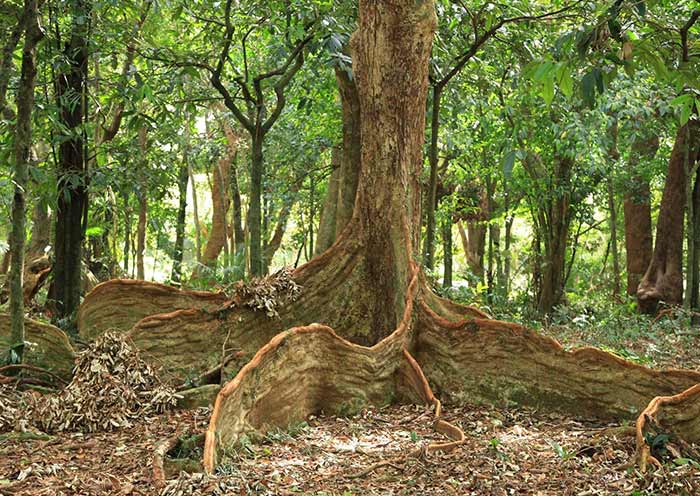
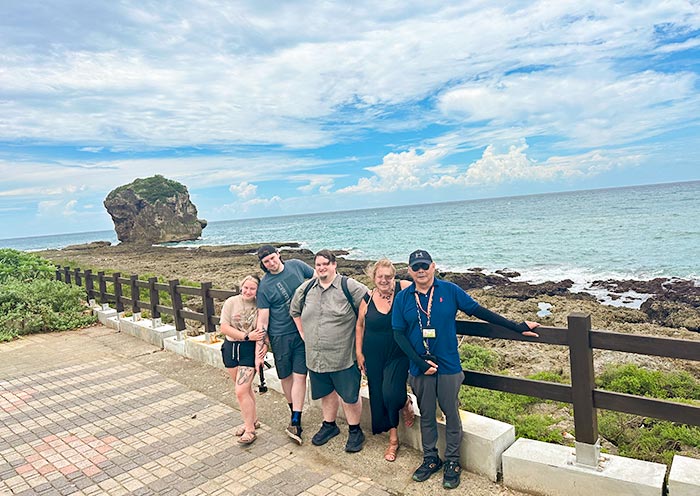
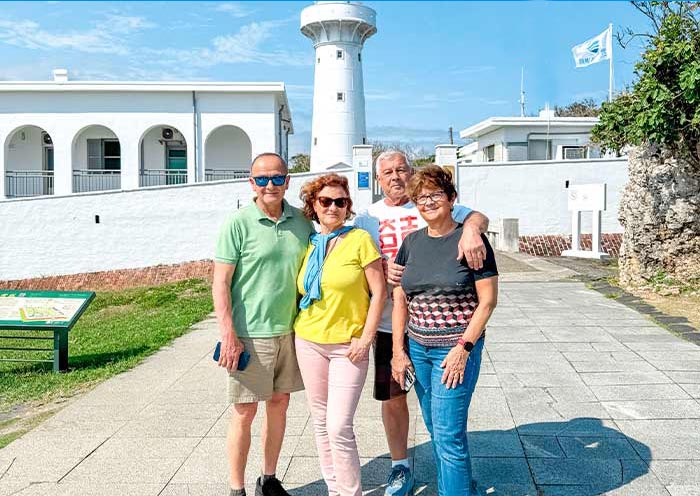
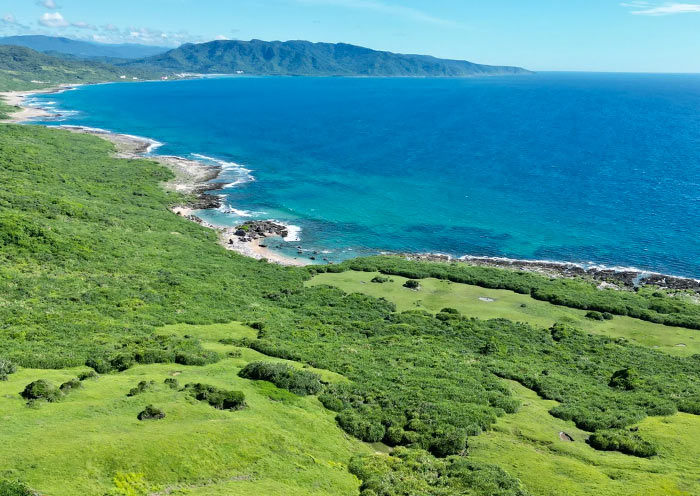
This morning, head back to Kaohsiung and explore Lotus Lake, Cijin Ferry, Cijin Old Street, Cijin Mazu Temple, Cijin Beach. Overnight in Kaohsiung.
In the morning, head to Lotus Lake (Lianchitan), one of the must-visit spots in Kaohsiung. Every summer, lotus flowers bloom, filling the air with a delightful fragrance, hence the name Lotus Pond. It is not only a great place to admire lotus flowers but also a destination for experiencing Eastern religious culture due to its pavilions, giant statues, and surrounding city walls. When you visit Lotus Lake, you cannot miss the iconic "Dragon and Tiger Pagodas" by its shores. This pagoda was recommended by CNN, making it one of Kaohsiung's most traditional religious scenic areas.
Built in 1976, the Dragon and Tiger Pagodas stand at seven stories tall and are connected to the Nine-Turn Bridge, reflecting on the lake's surface to create a picturesque scene. It's said that there's a tradition when visiting the Dragon and Tiger Pagodas – you should enter through the dragon's mouth and exit through the tiger's mouth, which brings good luck and wards off evil. The pagoda's interior walls are adorned with exquisite ceramic artwork depicting moral stories, crafted by renowned artists. Additionally, along the shores of Lotus Lake, there are many temples and attractions like the Spring and Autumn Pavilion and the Beiji Xuantian Shangdi Temple. It is a popular spot for locals to stroll, cycle, and relax by the lake.
Then, transfer to Kaohsiung’s Cijin Old Street of Cijin Island by Cijin Ferry.
Cijin Old Street is located on Cijin Peninsula, the earliest port in Kaohsiung, which was once primarily centered around fishing. Later, due to the construction of Kaohsiung Port, Cijin became an outlying island. As a must-visit tourist spot in Kaohsiung, Cijin Old Street, adjacent to the Cijin Ferry Terminal, is renowned for its fresh seafood and traditional snacks. Here, you can savor grilled squid, swordfish fried cakes, pork soup, oyster omelets, peanut coriander ice cream rolls, sweet potato cakes, pig blood cake, 50 Lan milk tea, and more. The street is lined with traditional old shops and unique vendors, exuding a nostalgic atmosphere.
Near Cijin Old Street, you can find Cijin Mazu Temple (Kaohsiung's first Mazu temple; Since 1673) for Mazu culture and Minnan architecture, or stroll on Cijin Beach for its black sands and sea view, perfect for experiencing the fishing village charm and harbor allure of the port of Kaohsiung!
After the food tour in Cijin Old Street, go back to your hotel in Kaohsiung.
Optional: (Self-pay; Double-check the route & time with your guide; Ferry+Taxi back to Hotel in Kaohsiung on your own):
Hike to Kaohsiung Lighthouse (Cijin Cihou Lighthouse) for Sunset: If time permits, you can quickly hike to the white lighthouse on Mount Cihou (Since 1883; 1 km one way), catching a glimpse of the colorful houses of Gushan Fishing Port nearby, Kaohsiung Harbor, and the landmarks of Kaohsiung City (85 Building) in the distance. It is a favorite spot for locals to take wedding photos, enjoy coffee, and watch the sunset. Here, you'll understand why Cijin Peninsula is known as the "Little Jeju Island."
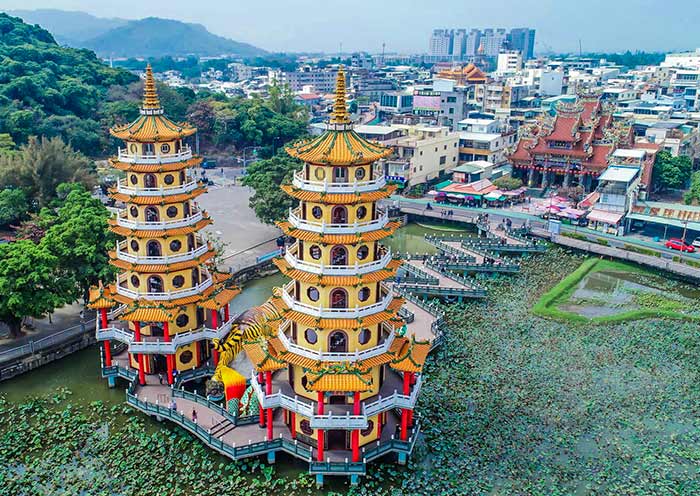
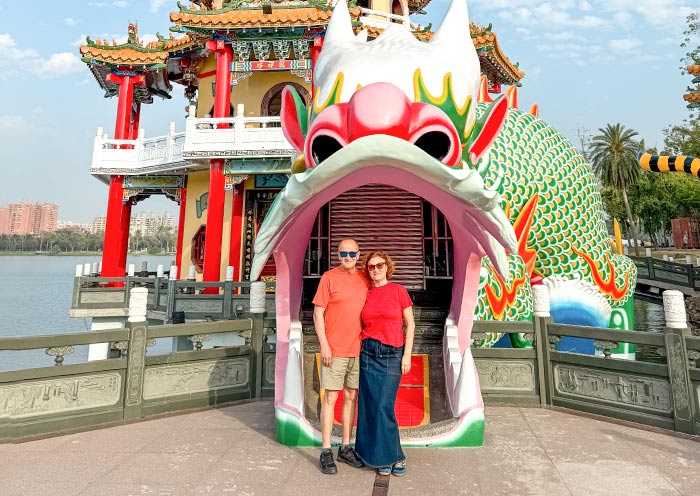

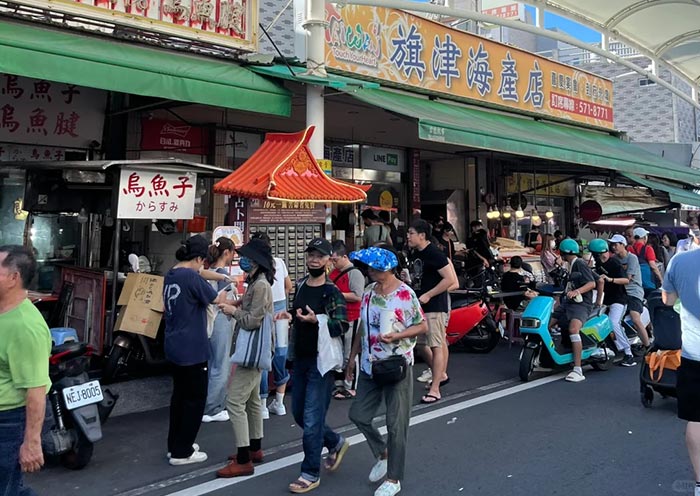
Today, visit Fo Guang Shan Buddha Museum, then head to Chiayi via Tainan (180 km). As the island's oldest city & former capital for over 200 years, you can explore Tainan’s Top Attractions like Anping Tree House & Anping Fort. As Taiwan's "Food Capital" or "Gastronomy Capital", you can explore local food through its streets like Anping Old Street.
In the morning, head to Kaohsiung for Fo Guang Shan Buddha Museum (Closed on Tuesdays). Fo Guang Shan Buddha Museum (佛光山佛陀紀念館) is the largest Buddhist monastery in Taiwan, and its Big Buddha of Fo Guang is a famous landmark in Kaohsiung. The museum was founded in 1967 by Master Hsing Yun (星云大师; 1927-2023) and his disciples. Master Hsing Yun is the founding abbot of Fo Guang Shan, the 48th generation heir of the Linji Chan School, who was ordained at Qixia Temple in Nanjing and later propagated Buddhism in Taiwan at the age of 23. He introduced and advocated the "Three Acts of Goodness三好运动" in 1998 (Have Good Intentions, Do Good Deeds, Speak Good Words存好心、做好事、说好话), which gained widespread popularity in schools and society.
You can explore the Path to Buddhahood (成佛大道), a 1.5-kilometer path lined with Bodhi trees symbolizing enlightenment and wisdom. Along the way, you can visit highlights such as the Eight Pagodas, the Pavilion for Ten Thousand People, the main museum, and the Big Buddha of Fo Guang. To reach the Pavilion for Ten Thousand People (万人照相台), you need to climb 37 steps, symbolizing the Thirty-Seven Practices leading to enlightenment. From the Pavilion for Ten Thousand People, you can take a photo with the Big Buddha by facing east and with the Eight Pagodas (八塔) by facing west. The Main Museum (本馆; only available on weekends) is one of the key structures of the Buddha Museum, which enshrines the true relics of Buddha. Finally, you will have a close-up view of the Giant Buddha of Fo Guang (佛光大佛), made of over 1,800 tons of bronze and iron, standing approximately 108 meters tall, making it one of the tallest outdoor seated Buddhas in the world.
Approximately 20% of the population in Taiwan are Buddhist believers, and the Fo Guang Shan Buddha Museum is a popular destination for locals to pray, meditate, and contemplate life's philosophy. The museum hosts an annual Lantern Festival during the Chinese New Year, featuring blessing lantern displays, floral parades, markets, and other activities. Additionally, the vegetarian meals here are also quite popular.
Then head to Tainan to visit the Anping Tree House at Anping (the earliest port in Taiwan's history), which was constructed at the end of the 19th century. Originally one of the five major trading firms, the Tait & Co. Warehouse was primarily used for exporting sugar, camphor, tea, and other goods. During the Japanese colonial period, it become a salt warehouse. After World War II, the warehouse was abandoned, allowing the banyan trees - a species that can grow into a forest on its own - to thrive. This led to the unique phenomenon of "Trees Within the House, House Within the Trees," resembling the large tree enveloping the "Ta Prohm Temple" in Angkor Wat.
Today, you can stroll through the house, experiencing the power of time and nature. You can also walk along the rooftop trail, witnessing the sight of "Tree Trunks Standing as Walls, Leaves Covering as Roof," and might even chance upon squirrels or birds playing among the treetops. If you get tired, you can take a break at the Tree House Café, where the NINAO Gelato Ice Cream is highly popular among locals.
Not far from Anping Tree House is Anping Fort (Fort Zeelandia). As Taiwan's first fort, it was built in 1624 by the Dutch. Initially serving as the Dutch center of power in Taiwan and a key hub for foreign trade, it has witnessed nearly 400 years of Taiwan's tumultuous history. In 1662, after Koxinga (郑成功) expelled the Dutch, the area was renamed "Anping Town" and became the administrative center of the Zheng Dynasty. During the Qing Dynasty (1636-1912), Fort Zeelandia gradually fell into disrepair, with much of its outer red brick walls dismantled to build Eternal Golden Castle. During the Japanese colonial period, the original Dutch structures were demolished and replaced with Japanese-style customs offices, residences, and a red brick watchtower. After renovations in 1975, the present-day white watchtower was established, becoming one of Tainan's landmarks.
Here, you can visit the only remaining Dutch period relic - the 65.8-meter-long red brick walls made of a mixture of sugar water, glutinous rice juice, and oyster shell lime. You can also climb the white watchtower to overlook Anping Harbor and the Saltwater River or explore the Fort Zeelandia Museum, delving into Dutch trade artifacts, a model of Fort Zeelandia, ships, cannons, and excavated ceramics. You can also take photos with the statue of Koxinga (Zheng Chenggong; Chenggong means Success in Chinese ), purchase cultural and creative products like "Success Beer" & "Success Popcorn." Additionally, Anping Fort is a filming location for the popular Taiwanese drama "Someday or One Day" (《想见你》2019), which has also brought attention to the delicious food on Anping Old Street (near Anping Fort).
Anping Old Street is the oldest street in all of Taiwan and was also the first street established by the Dutch. The narrow street is lined with many historically significant houses and temples, such as the Anping Mazu Temple and the Anping Guanyin Pavilion. Strolling through the alleyways of the old street, you will discover numerous traditional snacks that evoke nostalgia and preserve the flavors of locals' childhoods. These include Anping Tofu Pudding & Tainan Beef Soup, White Gourd Tea, Shrimp Rolls, oyster omelets, shrimp cakes, and sour plum soup.
You should try the signature "Sweet Rice Cake" featured in the "Someday or One Day", which is freshly made and fried on the spot. You can choose to dip it in toppings like ground peanuts, sesame seeds, brown sugar, white sugar, or matcha. Breaking through the crispy outer layer reveals a chewy white cake inside, but be careful as it can be hot! Enjoy Tainan food on Anping Old Street.
Overnight in Chiayi.

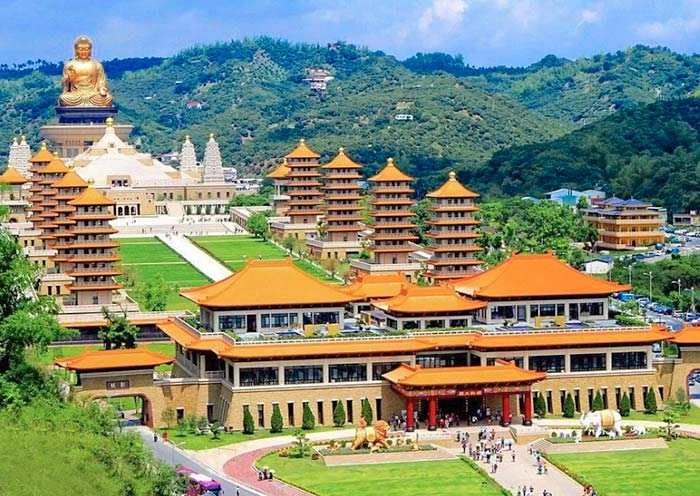
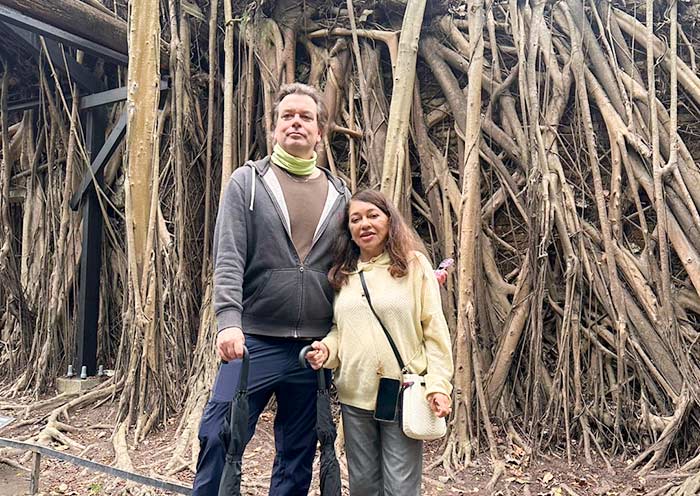
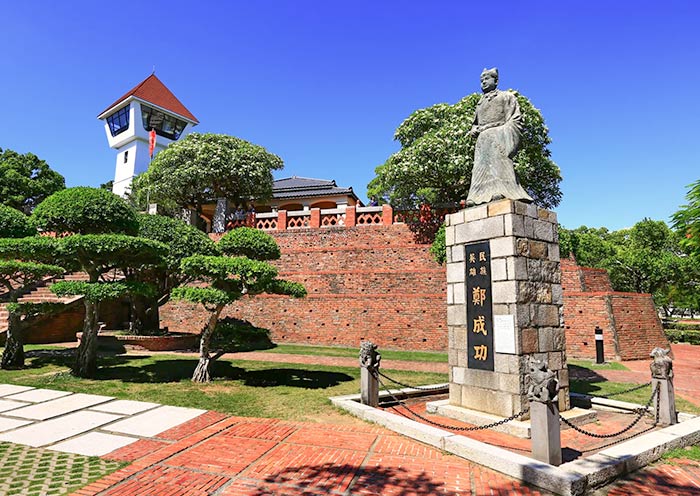
Today, you will depart Chiayi to Alishan Mountain (66 km) after visiting Hinoki Village.
Chiayi is acclaimed as the "Forestry Capital", with the Alishan Forest Railway (fully opened in 1912) bearing witness to the rise and fall of its forestry industry. When visiting Chiayi, you must explore Hinoki Village (桧意森活村) - Taiwan’s earliest forestry settlement and a Japanese-era (1895–1945) dormitory area known as the "Little Kyoto of Taiwan".
Comprising 29 Japanese-style wooden historic buildings, this complex is Taiwan’s largest cluster of Japanese architecture. Built primarily with Alishan cypress, the structures include single-family houses for senior staff, duplexes for managers and families, four-unit residences for dependents, and row houses for single employees, along with a public bathhouse and guesthouse.
Entering Hinoki Village, the scent of cypress transports you into a century of Alishan forestry history. Here, you can learn about timber heritage, admire traditional craftsmanship, browse artisan shops for souvenirs, enjoy coffee, and sample Japanese sweets. It’s perfect for strolls or taking photos in a kimono!
Then, head to Alishan, sung about by Asian superstar Teresa Teng as having "girls beautiful as water." Alishan stands alongside Sun Moon Lake as a major Taiwanese natural landmark.
You'll visit the core Alishan National Forest Recreation Area (阿里山森林游乐区), over 2,000 meters above sea level. This is Taiwan's most popular forest recreation area, famous for its forest railway, giant trees, evening glow, sunrise, and sea of clouds. The Alishan Forest Railway, one of only three high-mountain railways left globally. You’ll love red trains cut through mist, gliding past trees as they climb the mountain. Take ride and step into forest world! Choose Nature (A) route or Culture (B) route:
A Route (Zhaoping Station, Sisters Ponds, Three Brothers & Four Sisters, Golden Pig Auspice, Forever Love, Magnolia Garden, Shouzhen Temple)
Ride forest train or shuttle to Zhaoping Station. Then walk to Sisters Ponds where two sisters, loving same man but unwilling to harm each other, ended their lives. Then visit Three Brothers & Four Sisters (trees from shared roots), reach Golden Pig Auspice, a pig-typed tree stump shimmering under sun. Pass heart-shaped Forever Love tree to Magnolia Garden, and Shouzhen Temple (Alishan's largest temple dedicated to its guardian deity). Return by shuttle.
B Route (Shouzhen Temple, Three Generations of Wood, Alishan Museum, Xianglin Elementary School, Ciyun Temple, Alishan Sacred Tree Remains)
Take shuttle to start at Shouzhen Temple, visit Three Generations of Wood (three trees stubbornly growing from a single root). Explore Alishan Museum (tree specimens, indigenous culture), pass Xianglin Elementary (Taiwan's highest-altitude school), then reach cultural landmark of Alishan - Ciyun Temple (high Buddhist temple, Japanese Zen style). See Alishan Sacred Tree Remains, including the 2,300-year-old Xianglin Sacred Tree (香林神木). After gazing up at king of forest, take train back to the entrance.
Note: Train tickets and shuttle bus fees are at your own expense.
Tips:
1.Alishan Forest Railway tickets are popular. Consult us to purchase in advance.
2.Temperatures are low, even in summer, staying around 15∘C (59∘F). Bring a light down jacket.
3.Pack high-calorie snacks like chocolate.
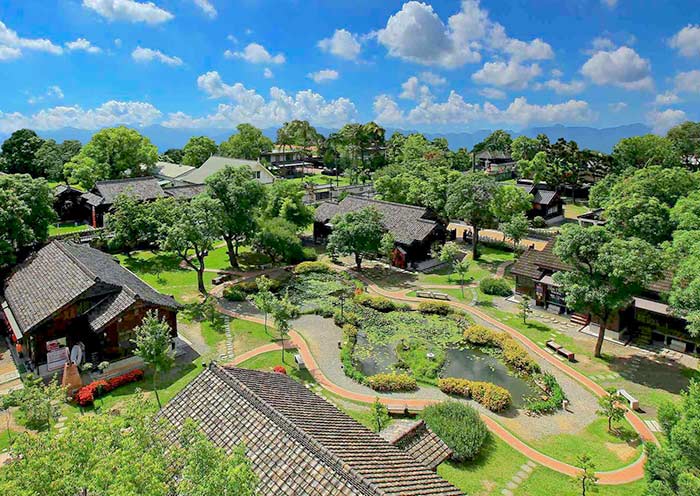
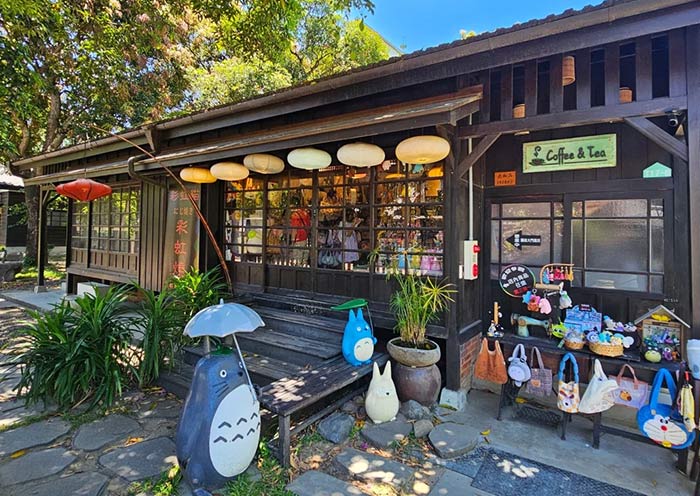

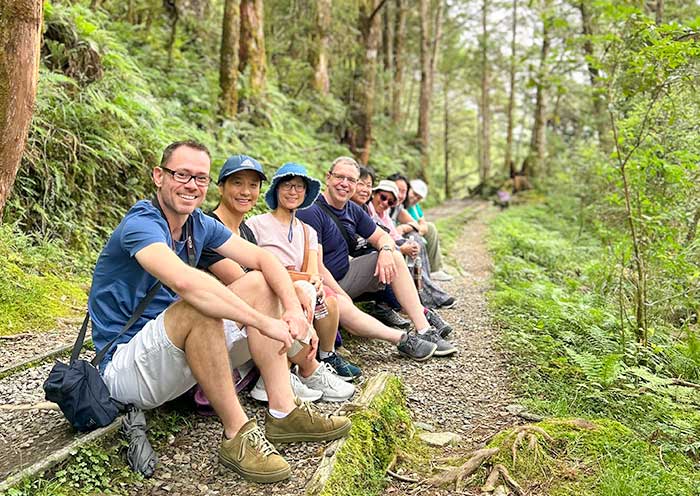
After breakfast, drive to explore Sun Moon Lake (100 km)!
Visit Sun Moon Lake (日月潭), Taiwan's largest natural freshwater lake and one of its "Eight Great Sights," as well as a sacred site for Taiwan's Thao indigenous people. At 748 meters elevation, the 116 square-kilometer lake boasts emerald green waters. Lalu Island divides it into two halves: Sun Lake (north, round like the sun) and Moon Lake (south, crescent-shaped like the moon).
Look afar, lake is surrounded by mountains adorned with beautiful trees. Pagodas peek through the foliage, and sunlight dances on water's surface. That’s "jumping sunshine"! You can take a sightseeing yacht counter-clockwise to explore all the highlights (Shuishe Pier → Xuanguang Temple Pier → Ita Thao Pier → Shuishe Pier).
Departing from Shuishe Pier by sightseeing yacht, you'll pass Lalu Island (拉鲁岛), the legendary home of the Thao ancestral spirits, which partially submerged due to an earthquake. Arrive at Xuanguang Pier to disembark and try delicious tea eggs. Follow the trail to Xuanguang Temple (玄光寺) by the lake, then proceed to Xuanzang Temple (玄奘寺) to see the relics of Master Xuanzang, and finally ascend Ci'en Pagoda (慈恩塔) for a panoramic view of Sun Moon Lake. Return to the pier to head to Ita Thao Pier, enjoy local delicacies ashore, and then return to Shuishe Pier.
Optional: If time permits, you can choose to cycle around the lake near Shuishe Pier, or take a cable car to explore the indigenous cultural theme park, Formosan Aboriginal Culture Village (九族文化村).
After the tour, stay at a hotel in Sun Moon Lake.
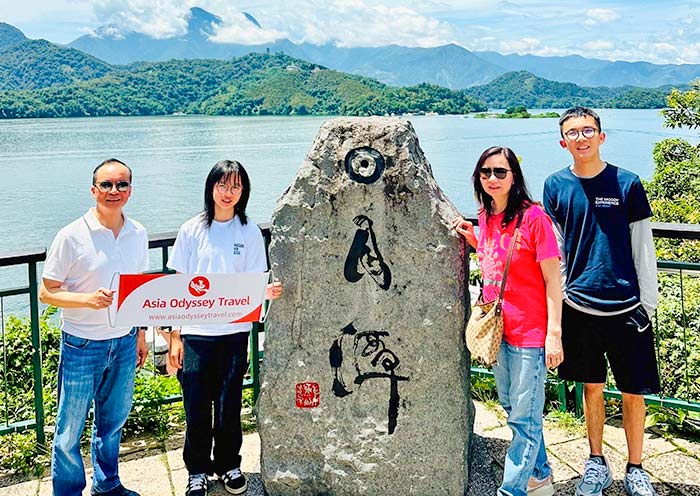
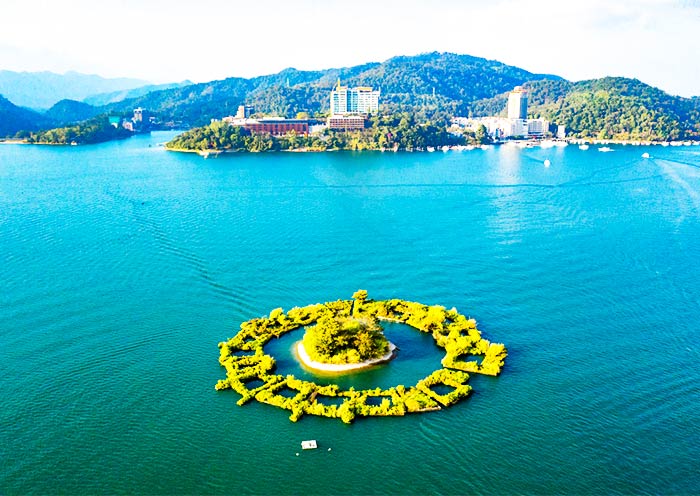
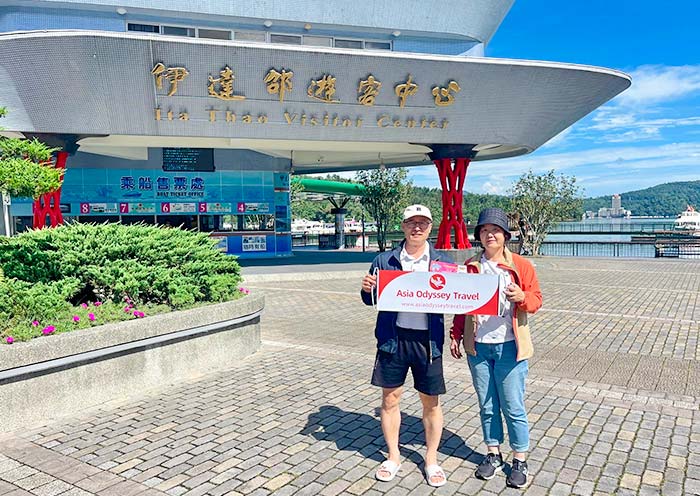
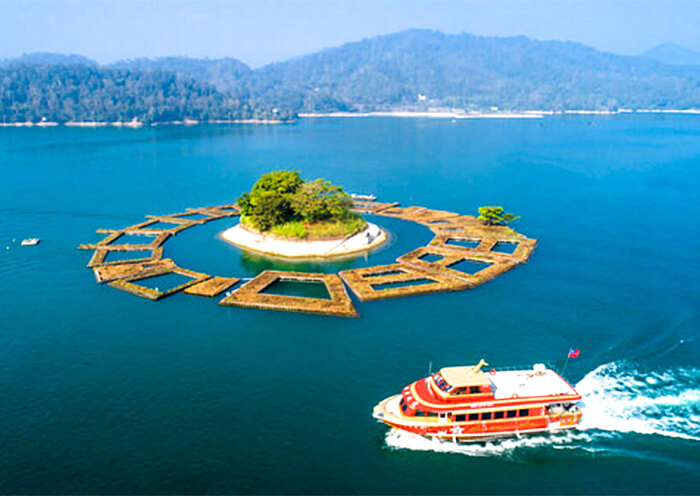
After breakfast, drive 260 km from Sun Moon Lake to Taipei.
On the way, enjoy DIY Pineapple Cakes (凤梨酥) first. This cake stand out as Taiwan's representative traditional pastry, filling with fresh pineapple or winter melon. It’s crisp, milky, and melt-in-your-mouth. This cake symbolizes good luck in Taiwan, and you'll get to make your own good fortune!
Overnight in Taipei
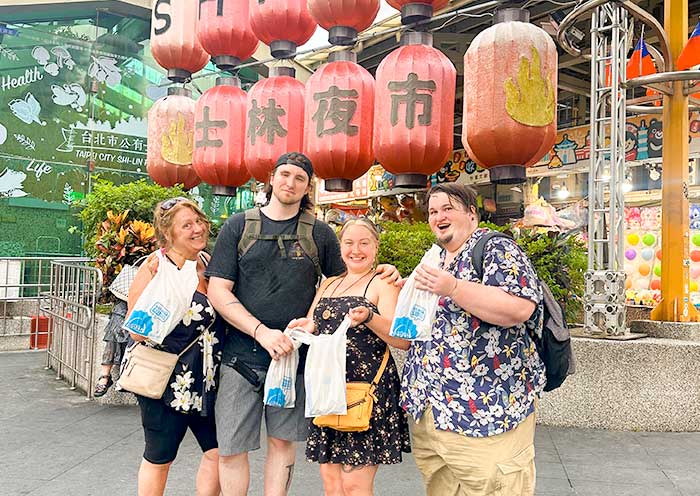
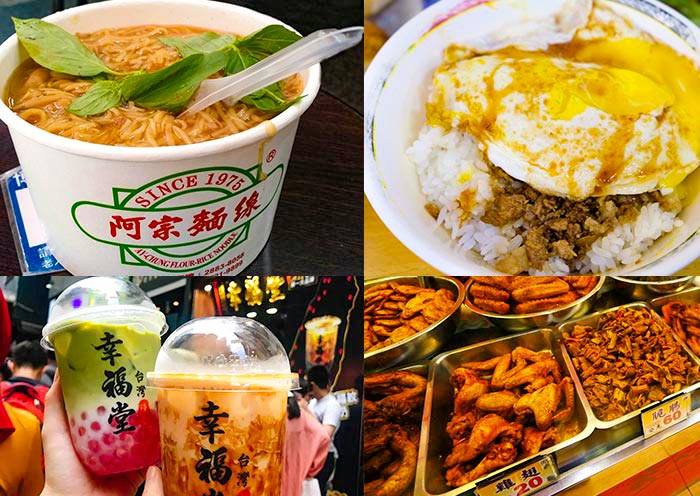
Today, you will tour unique rocks, waterfall, romantic old street in a day.
After breakfast, drive 30-40 minutes from the hotel to Yehliu Geopark (野柳地质公园), a must-see in Taiwan. It’s the most iconic geological park in northern Taiwan, and was even praised by CNN as the most Mars-like place on Earth. The strange rocks are highlight of this 1,700-meter-long narrow cape. It could be a surprise if you facetime someone and say “Guess where I am!”
In scenic area, Queen’s head (女王头), Taiwan tourism's landmark and calling card, will amaze you. The 2 meters tall rock, with a slender neck, resembles a queen sitting majestically, facing sea with her wind-blown crown. Long way to admire other rocks! Let your imagination run wild. Nature has no fixed answers.
Yehliu is also an important stopover for migratory birds, so birding lovers would have a double gift in March, April, and October.
Next, we'll drive 30 minutes to Jiufen Old Street (九份老街), Taiwan's famous mountain town. It prospered in the 1940s due to gold mining. Boom to bust. Revive due to Hou Hsiao-Hsien's classic film A City of Sadness. Admire winding stair alleys, rows of vintage red lanterns, old Japanese-style buildings.
While exploring, sit down and enjoy some tea. A sweet tooth will be obsessed with Jiufen's traditional taro balls. Look out, mountains and sea appear together, perfect partners to relax your mind. As night falls, sunset dyes mountains red. And red lanterns illuminate early, their lights seemingly pouring into sea!
Then, drive 30 minutes to Shifen Waterfall (十分瀑布), famous as "Taiwan's Niagara Falls". Its powerful spray creates a magnificent sight. Up close, waterfall's impressive 20-meter height and 40-meter width, along with its stunning rainbows, become even more apparent.
Finally, arrive at Shifen Old Street (十分老街), one of the birthplaces of sky lanterns and a popular "train street." Here, trains pass through, lined with traditional house mixed with Chinese & Japanese style. Countless films have been shot here. You can choose to do the Sky Lantern Release (Optional; self-pay), writing your wishes on it, and feeling as if they're coming true as it ascends into the sky. Be your hero or heroine!
After the tour, drive back to hotel in Taipei.
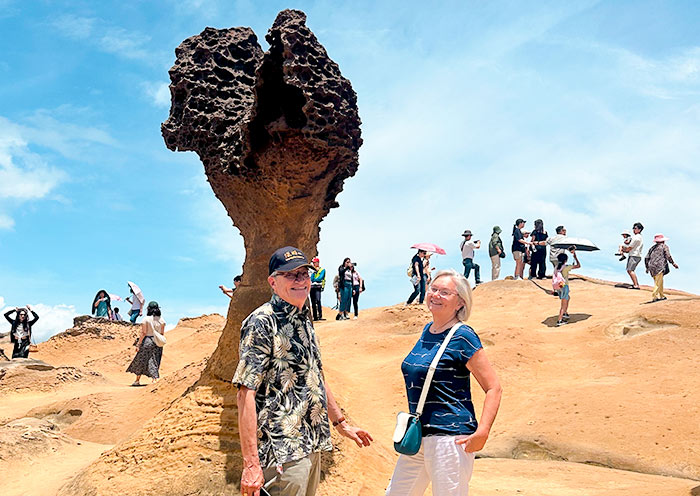
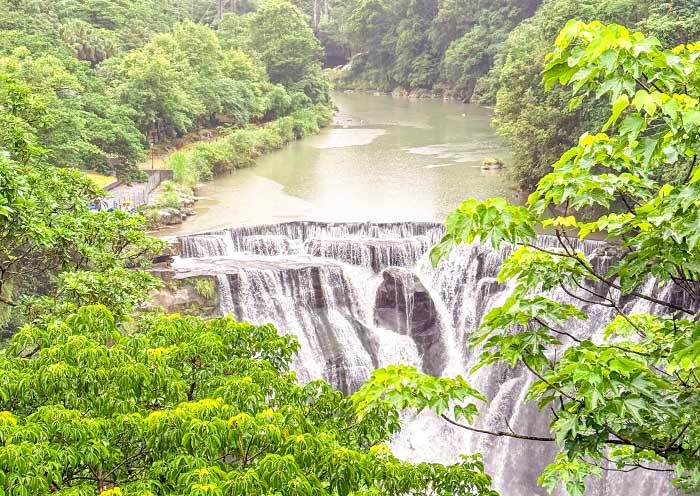
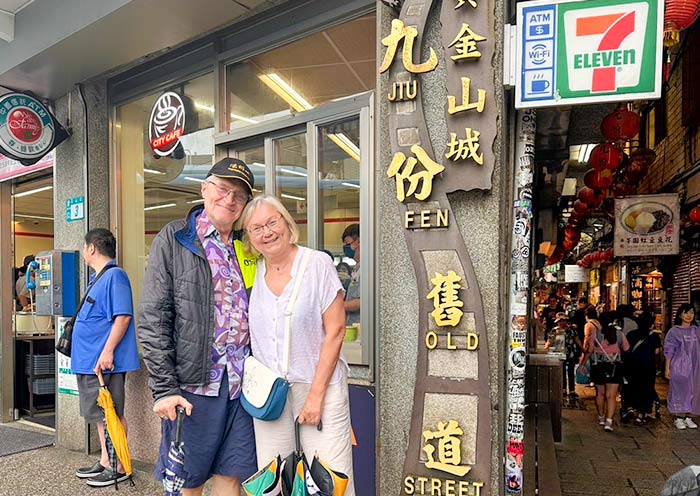
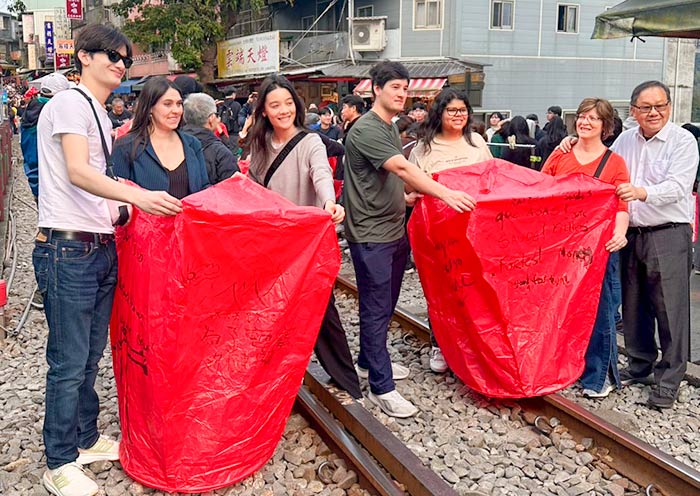
Another day with Hot Spring and dormant volcano.
After breakfast, head to Beitou Hot Spring Museum (北投温泉博物馆), a former Public Bathhouse during Japanese colonial era. It reflects the growing Hot Spring culture in Taiwan. Building blends Victorian and Japanese architectural styles. The ground floor is constructed from brick, the second floor from wood, and the roof is made of black tiles.
Inside, first floor features an 800-kilogram Beitou Stone. Upstairs, a wooden recreation area with a large tatami hall and balcony showcases early Taiwanese film history. Interactive exhibits even let you virtually learn hot spring culture from Japanese colonial period.
Next, visit Thermal Valley (地热谷) near museum. This is one of the sources of Beitou Hot Springs, located in the core of a volcanic cluster. Clear, bluish-green water reaches 80-100°C, emitting a faint sulfur scent. Steaming never stops.
As you approach, wind carries warm mist towards you, along with sulfuric aroma. However, it's crucial not to touch spring water, as it will cause burns, so take care of your limbs. While you can't directly soak, the scenic area provides a water channel with cooler spring water to enjoy a foot bath. Bring your towel, buy some hot spring eggs!
Next, a 30-minute ride brings you to Tamsui. Tamsui was a major international port starting in the late 1800s. So, buildings that mix Chinese and Western styles sprang up. Huwei Mackay Hospital (沪尾偕医馆) is a great example, Taiwan's very first Western-style hospital. Built in 1879 by a Canadian missionary named George Leslie Mackay. Look around, traditional Chinese bungalows with Western-style arched windows.
Then, a 4-minute walk leads to Fort San Domingo (红毛城), Taiwan's oldest existing colonial fort. Built by the Spanish in 1628 and rebuilt by the Dutch, its striking vermilion-red walls have stood for over 300 years. People still use its original Spanish name, San Domingo, though locals continue to call it "the Red-Haired Fort" (referring to Dutch hair). This historic site served as a military defense, consulate, and prison. Explore its buildings and gates to explore colonial-era weapons and tools..
Next, walk 5 minutes to Former British Merchant Residence (小白宫), a popular historic spot in Tamsui. Built in 1870, this pure white colonial building with its arcades and green verandas was once the Customs Commissioner's dormitory. Locals call it the "Little White House." A stroll under arched walkways is an absolute must-do!
Conclude your day at Tamsui Fisherman’s Wharf (渔人码头). This is one of northern Taiwan's most iconic coastal tourist landmarks. It boasts a beautiful floating pier, with its most famous attractions being a circular route formed by a 330-meter wooden boardwalk, harbor park, and Lover's Bridge.
You can stand on boardwalk and gaze across at Mount Guanyin and Taiwan Strait, watching the sunset slowly dip below the horizon. The salty sea breeze blows away all worries. All blue!
After the tour, drive back to hotel in Taipei.
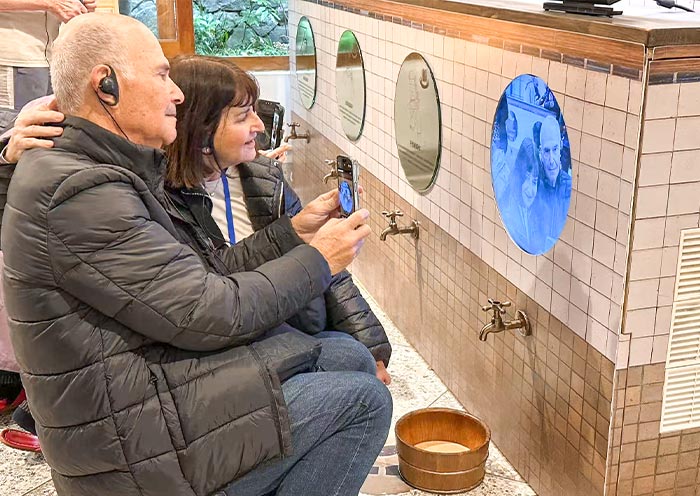

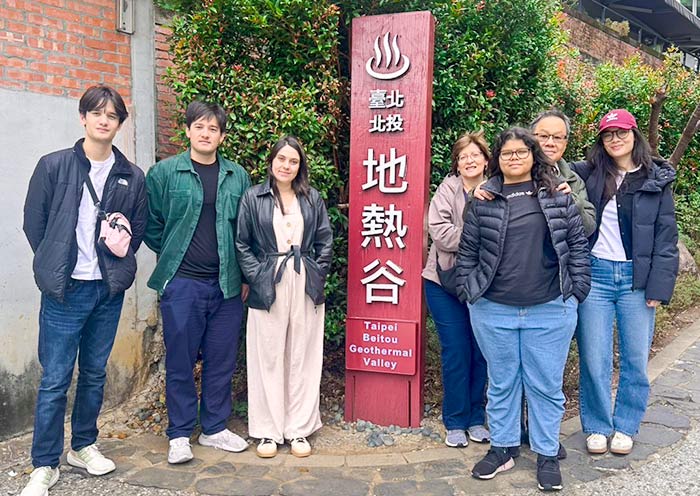
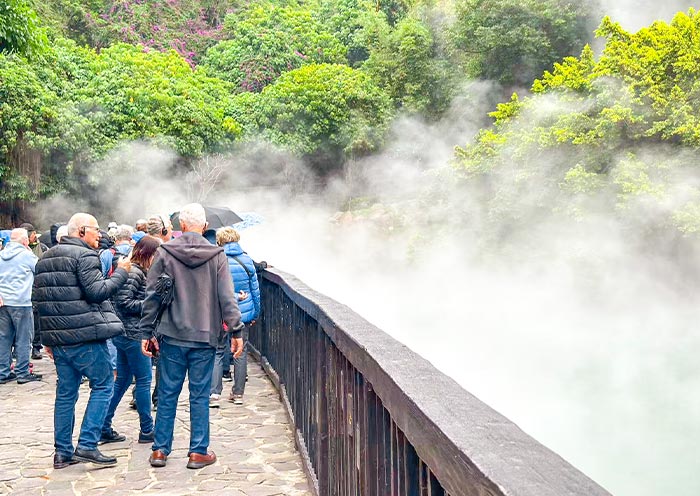
Today, enjoy a day in Taipei’s bustling city center. Then, depart Taipei in the evening.
First, head to the National Palace Museum (故宫博物院). It's one of the best museums in the world. Finished in 1965 in the style of traditional Chinese palace, museum houses almost 700,000 items, showing Chinese art from 8,000 years ago all the way to today.
Most of the amazing items are on the main four-story floor. You’ll admire three national treasures: Meat-Shaped Stone (looks like real pork belly), Jadeite Cabbage with Insects (a beautiful jade carving that was part of a queen's dowry), and Mao Gong Ding (an ancient bronze pot from Western Zhou Dynasty with ancient offer” inside). Look into ancient times that have long passed.
Second, come to Taiwan’s oldest district - Dadaocheng (大稻埕) & Dihua Street (迪化街) for city walk. Daocheng, a prior top 1 trade port in 1851, is now a living museum of Taipei's urban culture. A one-stop shop sells tea, traditional Chinese medicine, food, and more. This area saves shopping memories for generations of old-school Taiwanese. Spend time, go to Dadaocheng!
Stroll along Dadaocheng Wharf to enjoy the breeze. And, wander through Dihua Street within Dadaocheng, browse its various shops, old-style architecture, and the City God Temple.
Third, visit Chiang Kai-shek Memorial Hall (中正纪念堂), one of Taipei's iconic landmarks. Completed in 1980, it was built to commemorate the first president of the Republic of China. The memorial hall features white walls and a roof adorned with sapphire blue glazed tiles.
First floor displays Japan's instrument of surrender from World War II and life of this political powerhouse. Go ahead to outer plaza. You can get a good shot to visit the Changing of the Guard ceremony, which takes place every hour on the hour.
Then, head to the foot of Taipei 101 to admire its exterior (Optional for visit the 89 Floor to view Taipei City. Self-pay). At 508 meters high, Taipei 101 is the most iconic landmark in Taipei, holding the title of "world's tallest building" from 2004 to 2010. Its bamboo-stalk design blesses continuous growth and prosperity in Chinese culture. Overnight in Taipei.
Then, it is time to end your Taiwan Tour. Thank you for choosing Asia Odyssey Travel (AOT) for your Asia Tour, and we are always here working for you and hope to see you again for your next trip to Asia. Safe journey!
Extension Ideas:
1.You can extend your Taiwan Tour to other cities in Taiwan, such as Taitung, Hualien, Yilan, etc. We can customize your itinerary.

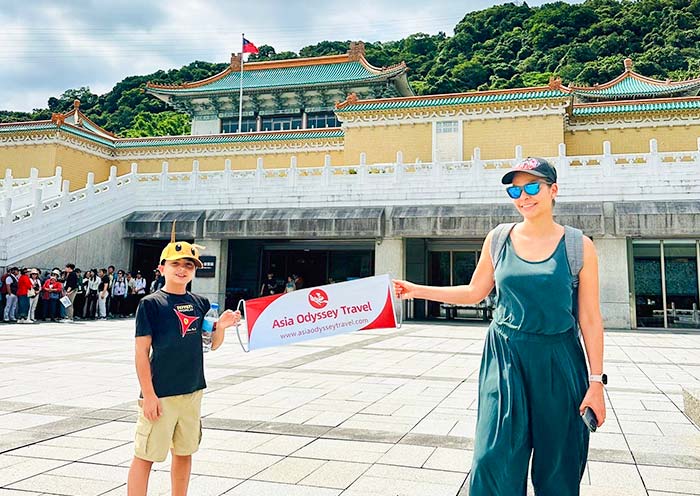
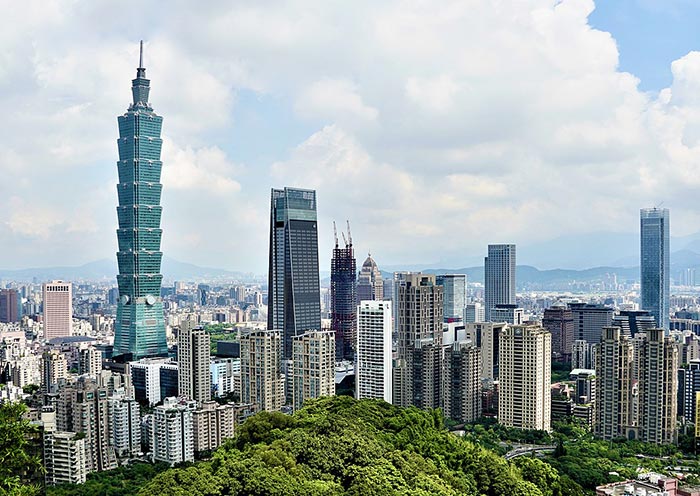
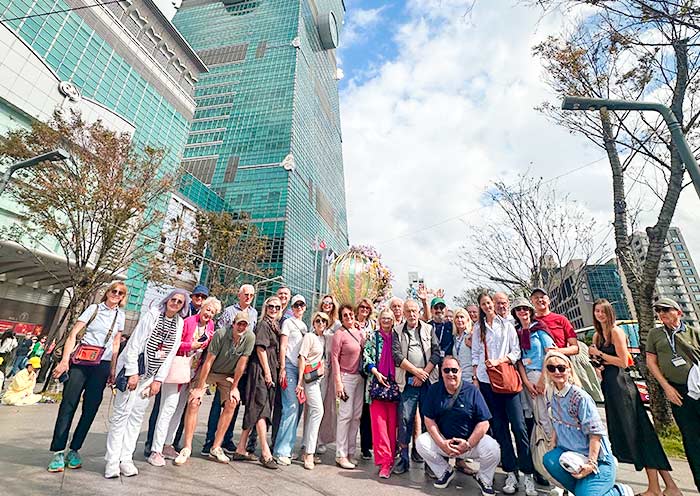
Price: What’s Included & What’s Excluded
What's Included:
What's Excluded:
Important Trip Notes for Booking Taiwan Tours
Accommodation & Hotel Condition for Your Taiwan Tour
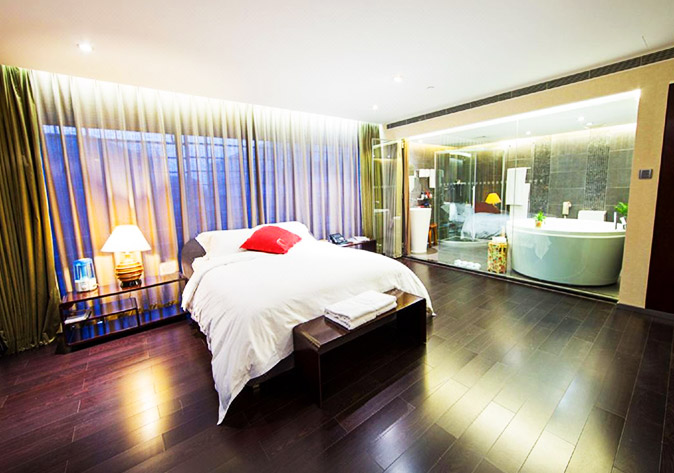

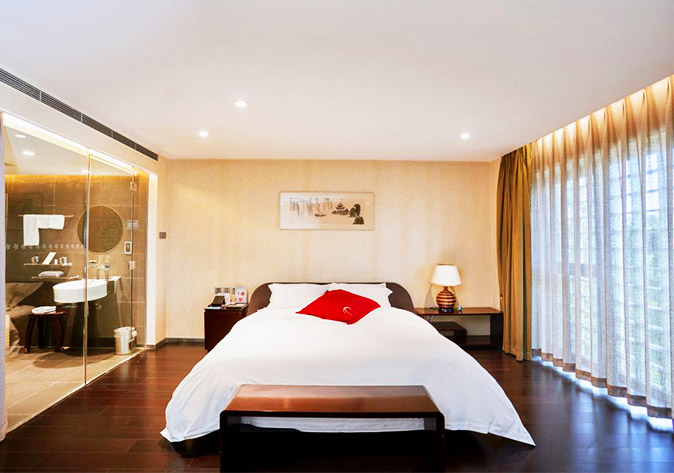
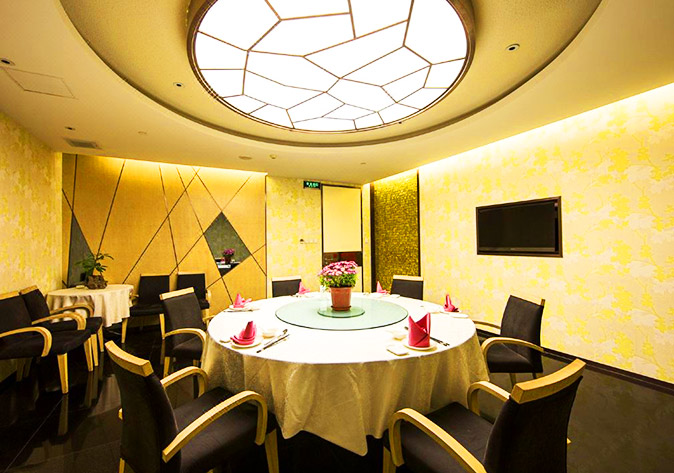
Photo Gallery for This Itinerary
Latest Taiwan Tours Reviews from Our Customers

Lujia zhang
United States
Destination(s): Taiwan
Date of Experience: Aug 09, 2025
Tour Customized by: Owen
You May be Interested in This Tour: Customized Tour

Sophie Carter
America
Every time I travel with my family, I can't help but be the most stressful one, always taking care of my parents and children. But Asia Odyssey Travel's Taiwan tour was completely stress-free. I'm so thankful! Their local team is excellent. We never had to worry about a thing, allowing us to fully enjoy Taiwan's beauty and culture. For our next family tour, Asia Odyssey Travel will definitely be my first choice.
Destination(s): Taiwan
Date of Experience: Jul 10, 2024
Tour Customized by: Isaac
You May be Interested in This Tour: 11 Days Taiwan Family Tour & Taiwan Round Island Tour

Sakura Tanaka
Japan
I had never tried oyster omelets or stinky tofu anywhere before. This trip was a total food adventure! Fortunately, they tasted good. Thanks to my consultant and guide's local hacks, my family enjoyed a good appetite at night markets in Kaohsiung and Tainan. Every local staff member we encountered was incredibly friendly, patient, and genuinely eager to make our trip special. It's the personal touch that really stands out.
Destination(s): Taiwan
Date of Experience: Jul 10, 2024
Tour Customized by: Shirley
You May be Interested in This Tour: 3 Days Kaohsiung Food Tour - Try Taiwan Food in Kaohsiung & Tainan
Price: Request
(Based on a private tour for two people. Price varies depending on program, travel date, number of people.)
Free Enquiry! You don’t need to pay for the reservation.
- United States (+1)
- Australia (+61)
- Singapore (+65)
- Malaysia (+60)
- Philippines (+63)
- Canada (+1)
- Italy (+39)
- Indonesia (+62)
- United Kingdom (+44)
- Spain (+34)
- Mexico (+52)
- Hong Kong (+852)
- Thailand (+66)
- United Arab Emirates (+971)
- New Zealand (+64)
- South Africa (+27)
- Germany (+49)
- Brazil (+55)
- India (+91)
- France (+33)
- Vietnam (+84)
- The Netherlands (+31)
- Saudi Arabia (+966)
- Ireland (+353)
- Argentina (+54)
- Switzerland (+41)
- Romania (+40)
- Pakistan (+92)
- Japan (+81)
- Portugal (+351)
- Bangladesh (+880)
- South Korea (+82)
- Puerto Rico (+1)
- Türkiye (+90)
- China (+86)
- Belgium (+32)
- Qatar (+974)
- Greece (+30)
- Taiwan (+886)
- Austria (+43)
- Poland (+48)
- Israel (+972)
- Chile (+56)
- Sri Lanka (+94)
- Nigeria (+234)
- Peru (+51)
- Colombia (+57)
- Hungary (+36)
- Nepal (+977)
- Denmark (+45)
- Bulgaria (+359)
- Norway (+47)
- Slovenia (+383)
- Sweden (+46)
- Kuwait (+965)
- Costa Rica (+506)
- Ecuador (+593)
- Venezuela (+58)
- Malta (+356)
- Croatia (+385)
- Tunisia (+216)
- Czechia (+420)
- Mongolia (+976)
- Bahrain (+973)
- Mauritius (+230)
- Papua New Guinea (+675)
- Cambodia (+855)
- Dominican Republic (+1)
- Luxembourg (+352)
- Finland (+358)
- Guatemala (+502)
- Myanmar (+95)
- Maldives (+960)
- Slovakia (+421)
- Laos (+856)
- Serbia (+381)
- Brunei (+673)
- Oman (+968)
- Macao (+853)
- Panama (+507)
- Morocco (+212)
- Jordan (+962)
- Georgia (+995)
- Fiji (+679)
- Bolivia (+591)
- Lithuania (+370)
- Bahamas (+1)
- Cyprus (+357)
- Latvia (+371)
- Bhutan (+975)
- Iraq (+964)
- Iran (+98)
- Kenya (+254)
- Jamaica (+1)
- Zimbabwe (+263)
- Azerbaijan (+994)
- Uruguay (+598)
- Estonia (+372)
- Andorra (+376)
- Cameroon (+237)
- Ghana (+233)
- Kazakhstan (+7)
- Nicaragua (+505)
- Egypt (+20)
- Russia (+7)
- Albania (+355)
- Réunion (+262)
- Montenegro (+382)
- Algeria (+213)
- Afghanistan (+93)
- Martinique (+596)
- Uganda (+256)
- Honduras (+504)
- North Macedonia (+389)
- Trinidad and Tobago (+1)
- Suriname (+597)
- Antigua and Barbuda (+1)
- Zambia (+260)
- Ukraine (+380)
- Armenia (+374)
- Barbados (+1)
- Belarus (+375)
- Palestine (+970)
- Lesotho (+266)
- Moldova (+373)
- Ethiopia (+251)
- French Polynesia (+689)
- Gambia (+220)
- Guam (+1)
- Gibraltar (+350)
- Isle of Man (+44)
- New Caledonia (+687)
- El Salvador (+503)
- Comoros (+269)
- Seychelles (+248)
- Chad (+235)
- Samoa (+685)
- Cook Islands (+682)
- Palau (+680)
- Paraguay (+595)
- DR Congo (+243)
- Solomon Islands (+677)
